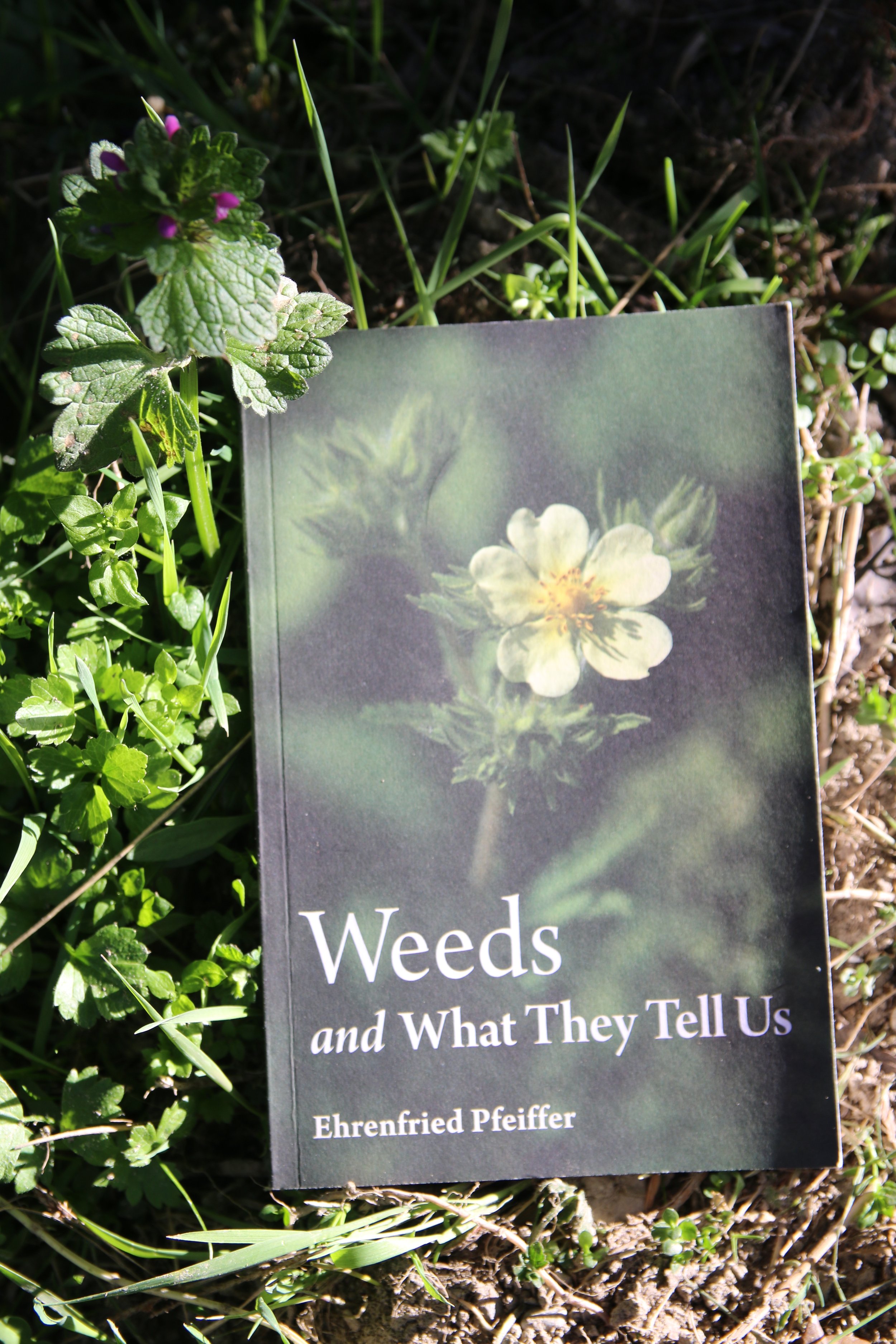Book review: Weeds and What They Tell Us
By Ehrenfried Pfeiffer
"Weeds are weeds only from our human egotistical point of view, because they grow where we do not want them. In nature, however, they play an important and interesting role." - Ehrenfried Pfeiffer
“Weeds and What they Tell Us” is a classic book written in the 1950’s (and it needs to be read in that context) essentially outlines some of the different varieties of common weeds, how they grow, what to do about them and what they can tell us about soil health.
Dr Ehrenfried Pfeiffer (1899–1961) was born in Munich and trained as a scientist. He took on a lifetime of biological research and was a pioneer in the field of sustainable agriculture working with fellow scientist Rudolf Steiner. He visited the U.S. during the 1930s before immigrating in 1940 where he went on to be a pioneer of biodynamic agriculture and helped establish the Biodynamic Farming & Gardening Association.
The biodynamic approach is based around systems where the farm, vineyard, orchard or garden is viewed as a living whole and each activity affects everything else. Biodynamic management is based on the grower’s own careful observations, plus the results of tests and analyses versus a reliance on chemicals.
“Weeds and What they Tell Us” was written during a time when an industrial approach to weeds was prevalent and the industry sought to understand weeds only to find the appropriate herbicide. Pfeiffer on the other hand was interested in understanding weeds ecological function in the soil.
Weeds, Pfeiffer argues are often plants with a particular role in building soil and healing it. “They are witness of man’s failure to master the soil,” wrote Pfeiffer, “… they only indicate our errors and nature’s corrections.” In Pfeiffer’s view, weeds appear not as a reminder of our errors but to play a role in restoring the landscape or showing us where we have gone wrong.
For example, Palmer amaranth (also known as pigweed) is a plant that likes disturbed soils, and industrial agriculture, through activities such as ploughing, has given it an ideal environment. Ecologically, these fields are in need of healing, and plants like Palmer amaranth are made to begin that work. Amaranth is a very good nitrogen scavenger, utilizing whatever nitrogen it can leach from the soil. It doesn’t need much to grow, but with lots of spare nitrogen from fertilizers in these fields, it makes use of the extra nutrients. That is part of what makes it such a challenging weed from the farmer’s perspective, but from an ecological view it is an amazing plant that can thrive in poor soils.
Palmer amaranth also has a very deep taproot, like a dandelion, that can break through compacted soil, drawing nutrients up toward the surface. Fields that have been cultivated by farming equipment (such as tractors) are very compacted and Palmer amaranth can begin loosening that soil.
Farmers who are having the best success with controlling Palmer amaranth aren’t those who are following the latest herbicide products but those farmers who are using ecological approaches built around soil health. Pfeifer’s key point in “Weeds and What They Tell Us” is that often the best way to be rid of a weed is not to kill it off, but to address the problem it reveals.
This book reminds us that weeds are a part of the rhythm of nature. All too often we continue to exploit our soil, using it as an endless resource to extract from rather than a finite resource to be carefully managed and enhanced. Many weeds do have benefits, including highlighting and correcting negative issues with our soil. Weeds and What They Tell Us shows us how weeds can be managed in a more sustainable way rather than a reliance on chemicals which may in reality exacerbate the weed problems and damage our valuable soil resource.
Weeds and What They Tell Us is a short book (90 pages) and is an interesting read from a pioneer in the biodynamic field. Overall Pfeifer encourages us to take a more flexible and kinder view of weeds and their role in the garden, on the farm and across our landscape.
Black Teal Bay Books rating: 7/10

